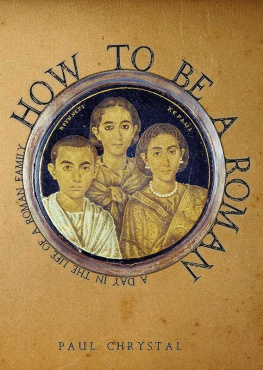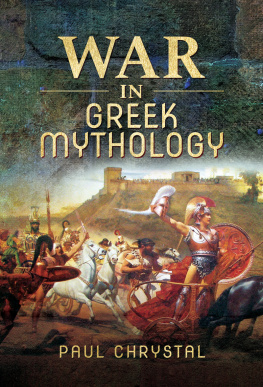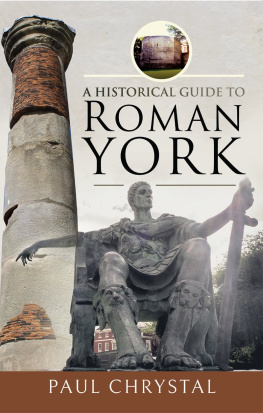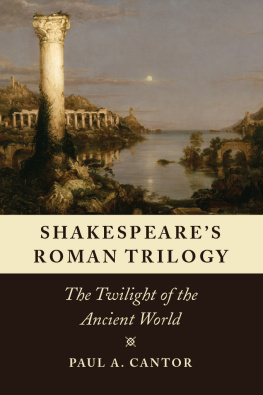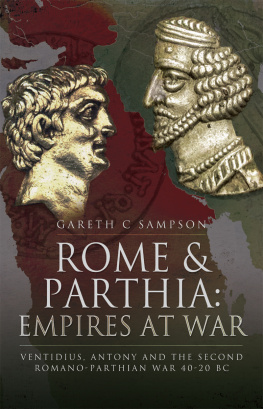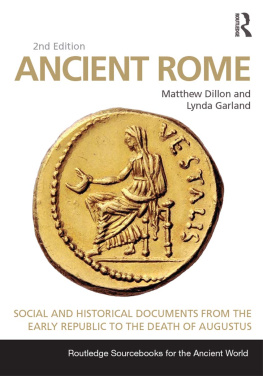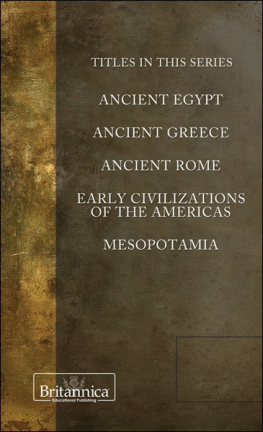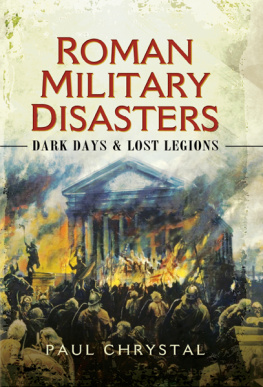Pagebreaks of the print version

Rome: Republic into Empire
By the same author
Women in Ancient Rome (2013)
Roman Women - The Women who Influenced Roman History (2015)
In Bed with the Romans (2015)
Wars & Battles of the Roman Republic (2015)
Roman Military Disasters (2015)
In Bed with the Ancient Greeks (2016)
Ancient Greece in 100 Facts (2017)
Women in Ancient Greece (2017)
When in Rome A Social History of Rome (2017)
Women at War in Ancient Greece & Rome (2017)
How to be a Roman (2017)
Wars & Battles of Ancient Greece (2018)
Roman Record Keeping & Communications (2018)
Emperors of Rome, from Tiberius to Elagabalus - The Monsters (2018)
Reportage from Ancient Greece and Rome (2019)
Marvels, Mysteries & Magic In The Ancient World (2019)
War in Greek Mythology (2019)
War in Roman Myth and Legend (2019)
The Romans in the North of England (2019)
Rome: Republic into Empire
The Civil Wars of the First Century BCE
Paul Chrystal
First published in Great Britain in 2019 by
Pen & Sword Military
An imprint of
Pen & Sword Books Ltd
Yorkshire Philadelphia
Copyright Paul Chrystal 2019
ISBN 978 1 52671 009 3
eISBN 978 1 52671 011 6
Mobi ISBN 978 1 52671 010 9
The right of Paul Chrystal to be identified as Author of this work has been asserted by him in accordance with the Copyright, Designs and Patents Act 1988.
A CIP catalogue record for this book is available from the British Library.
All rights reserved. No part of this book may be reproduced or transmitted in any form or by any means, electronic or mechanical including photocopying, recording or by any information storage and retrieval system, without permission from the Publisher in writing.
Pen & Sword Books Limited incorporates the imprints of Atlas, Archaeology, Aviation, Discovery, Family History, Fiction, History, Maritime, Military, Military Classics, Politics, Select, Transport, True Crime, Air World, Frontline Publishing, Leo Cooper, Remember When, Seaforth Publishing, The Praetorian Press, Wharncliffe Local History, Wharncliffe Transport, Wharncliffe True Crime and White Owl.
For a complete list of Pen & Sword titles please contact
PEN & SWORD BOOKS LIMITED
47 Church Street, Barnsley, South Yorkshire, S70 2AS, England
E-mail:
Website: www.pen-and-sword.co.uk
Or
PEN AND SWORD BOOKS
1950 Lawrence Rd, Havertown, PA 19083, USA
E-mail:
Website: www.penandswordbooks.com
About the author
P aul Chrystal was educated at the Universities of Hull and Southampton where he took degrees in Classics. He has worked in medical publishing sales for over thirty years but now combines this with writing features for national newspapers and history magazines (Minerva Magazine, BBC History Magazine, Ancient History Magazine, Omnibus and Ad Familiares) as well as appearing regularly on BBC local radio, BBC Radio 4 and on the BBC World Service. A reviewer for Classics for All, he is the author of over 100 books on a wide range of subjects, including many on ancient Greece and Rome. Paul has also contributed to a forthcoming 6-part series for BBC2 celebrating the history of some of Britains most iconic craft industries, in this case chocolate in York. He has been history advisor for a number of York tourist attractions. From 2019 he takes over the editorship of York Historian, the journal of the Yorkshire Architectural and York Archaeological Society. Also in 2019, he is guest speaker for Vassar College New Yorks London Programme with Goldsmith University. Paul lives near York.
For more information please visit the authors website: www.paulchrystal.com.
List of Plates
Marius Amid the Ruins of Carthage (1832), John Vanderlyn (1775-1852). The subject is from Plutarchs Lives, of Caius Marius after being expelled from Rome. Marius is seen in reflective mood, sitting in exile amid the ruins of Carthage, which had been destroyed by Romans. The artist aimed to reveal in two great instances the instability of human grandeur - a city in ruins and a fallen general. The Albany Institutes Marius is a small version of a painting of the same subject that won Vanderlyn a gold medal at the prestigious Paris Salon of 1808 and is now in the Fine Arts Museums of San Francisco. (Albany Institute of History&Art)
The Column of Julius Caesar, where he addressed his army to march on Rome and start the Civil War; Rimini, Italy. (Photographer Georges Jansoone)
Lecture Diagram, c.1814, Caesars bridge over the Reno built in 55 BCE during the Gallic Wars. (London, Sir John Soanes Museum)
This mosaic showing the Battle of Thapsus in 46 BCE is from Praeneste, and now resides in the Staatliche Antikensammlungen, Berlin, between the busts of Caesar and Cleopatra. It is part of another, larger Nilotic mosaic dating to the late first century BCE found at the Temple of Fortuna Primigenia in Palestrina, and which is now in the National Archeological Museum there. Given the Egyptian topography and Alexandrian origin of the work (animals familiar to the Alexandrians have no labels; those that are not, such as giraffes and rhinoceroses, are in Greek), Goudchaux suggests in his comments on the mosaic in the exhibition catalogue to the exhibition Cleopatra of Egypt: From History to Myth that it may have been commissioned by Cleopatra herself to thank the goddess Primigenia for the birth of Caesarion.
Vercingetorix throws down his arms at the feet of Julius Caesar by Lionel Royer (1899), Muse Croatzier du Puy-en-Velay. Wonderful as this painting is, the artist has permitted himself much artistic licence. The painting depicts the surrender of Vercingetorix after the Battle of Alesia (52 BCE). One of the warriors (bottom left) has a torque around his neck. In fact, the torque was reserved only for gods and important members of a royal family. The depiction of Gauls with long hair and moustaches is also questionable. The horse is a Percheron, although at that time this breed was not to be found in Gaul. In addition, the Gauls rode bareback, but here the horse is saddled and harnessed. The rectangular shield also does not accord with the time, when they were mostly oval.
Woodcut illustration of Porcia Catonis counselling Marcus Junius Brutus, Julius Caesars death at the hands of Brutus and Gaius Cassius Longinus, and Porcias suicide, hand-coloured in red, green, yellow and black, from an incunable German translation by Heinrich Steinhwel of Boccaccios De mulieribus claris, printed by Johannes Zainer at Ulm c. 1474. One of seventy-six woodcut illustrations depicting scenes from the life of women. (Penn Libraries)
The Murder of Caesar (1865) by Karl von Piloty (1826-1886). (Lower Saxony State Museum, Hanover)
The Assassination of Julius Caesar (1804-1805) by Vincenzo Camuccini (1771-1844). (Galleria Nazionale dArte Moderna, Rome)
La Mort de Csar (c. 1859-1867) by Jean-Lon Grme (1824-1904), showing the aftermath of the attack, with Caesars body abandoned in the foreground as the senators rejoice - but not for long (Bequeathed to Walters Art Museum, Baltimore, by Henry Walters, 1931)
Julius Caesar. Act IV. Scene III. Brutuss tent, in the camp near Sardis. Brutus and the Ghost of Caesar (1802). Copperplate engraving by Edward Scriven from a painting by Richard Westall, illustrating Act IV, Scene III, from Shakespeares Julius Caesar.



